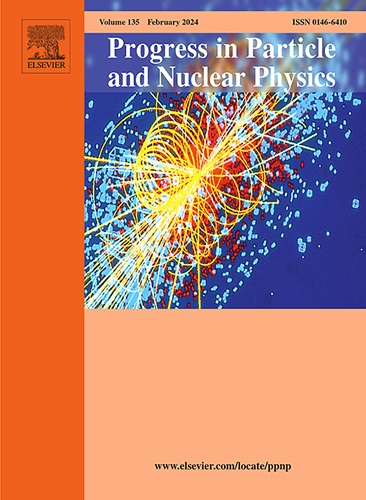Ultra-cold atoms as quantum simulators for relativistic phenomena
IF 17.9
2区 物理与天体物理
Q1 PHYSICS, NUCLEAR
引用次数: 0
Abstract
The goal of this article is to review developments regarding the use of ultra-cold atoms as quantum simulators. Special emphasis is placed on relativistic quantum phenomena, which are presumably most interesting for the audience of this journal. After a brief introduction into the main idea of quantum simulators and the basic physics of ultra-cold atoms, relativistic quantum phenomena of linear fields are discussed, including Hawking radiation, the Unruh effect, cosmological particle creation, the Gibbons–Hawking and Ginzburg effects, super-radiance, Sauter–Schwinger and Breit–Wheeler pair creation, as well as the dynamical Casimir effect. After that, the focus is shifted to phenomena of non-linear fields, such as the sine–Gordon model, the Kibble–Zurek mechanism, false-vacuum decay, and quantum back-reaction. In order to place everything into proper context, the basic underlying mechanisms of these phenomena are briefly recapitulated before their simulators are discussed. Even though effort is made to provide a review as fair as possible, there can be no claim of completeness and the selection as well as the relative weights of the topics may well reflect the personal view and taste of the author.
超冷原子作为相对论现象的量子模拟器
本文的目的是回顾有关使用超冷原子作为量子模拟器的发展。特别强调的是相对论性量子现象,这可能是本杂志的读者最感兴趣的。在简要介绍了量子模拟器的主要思想和超冷原子的基本物理之后,讨论了线性场的相对论量子现象,包括霍金辐射、安鲁效应、宇宙学粒子产生、吉本斯-霍金和金兹堡效应、超辐射、Sauter-Schwinger和bret - wheeler对产生以及动态卡西米尔效应。之后,重点转移到非线性场的现象,如正弦戈登模型,Kibble-Zurek机制,假真空衰变和量子反反应。为了将所有内容置于适当的上下文中,在讨论这些现象的模拟器之前,将简要概述这些现象的基本潜在机制。尽管我们尽了最大的努力来提供一份公正的评论,但我们不能声称这篇评论是完整的,这些主题的选择以及相对的权重可能很好地反映了作者的个人观点和品味。
本文章由计算机程序翻译,如有差异,请以英文原文为准。
求助全文
约1分钟内获得全文
求助全文
来源期刊

Progress in Particle and Nuclear Physics
物理-物理:核物理
CiteScore
24.50
自引率
3.10%
发文量
41
审稿时长
72 days
期刊介绍:
Taking the format of four issues per year, the journal Progress in Particle and Nuclear Physics aims to discuss new developments in the field at a level suitable for the general nuclear and particle physicist and, in greater technical depth, to explore the most important advances in these areas. Most of the articles will be in one of the fields of nuclear physics, hadron physics, heavy ion physics, particle physics, as well as astrophysics and cosmology. A particular effort is made to treat topics of an interface type for which both particle and nuclear physics are important. Related topics such as detector physics, accelerator physics or the application of nuclear physics in the medical and archaeological fields will also be treated from time to time.
 求助内容:
求助内容: 应助结果提醒方式:
应助结果提醒方式:


